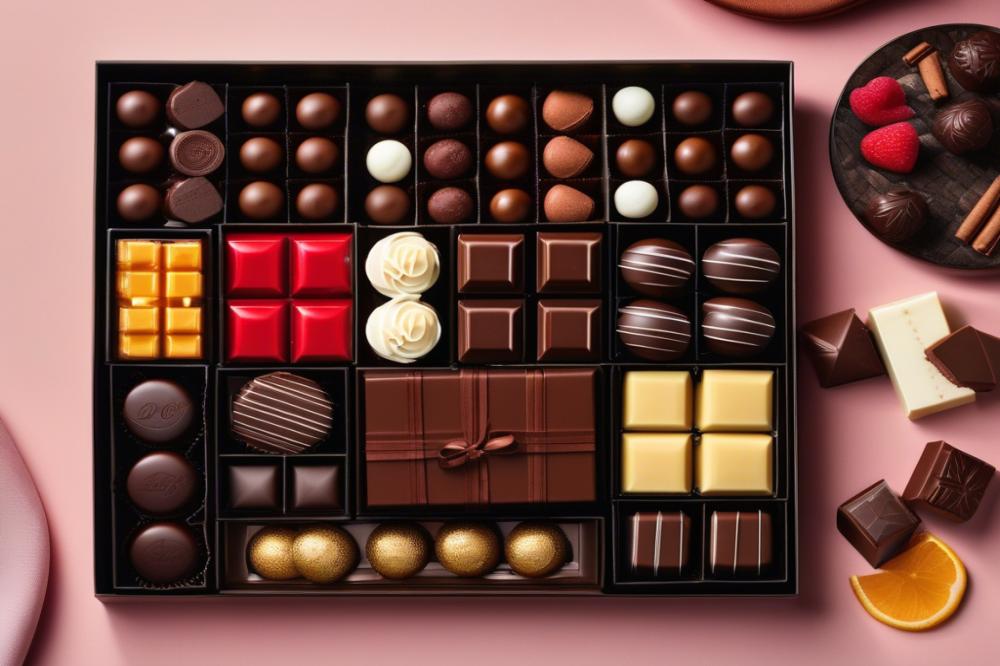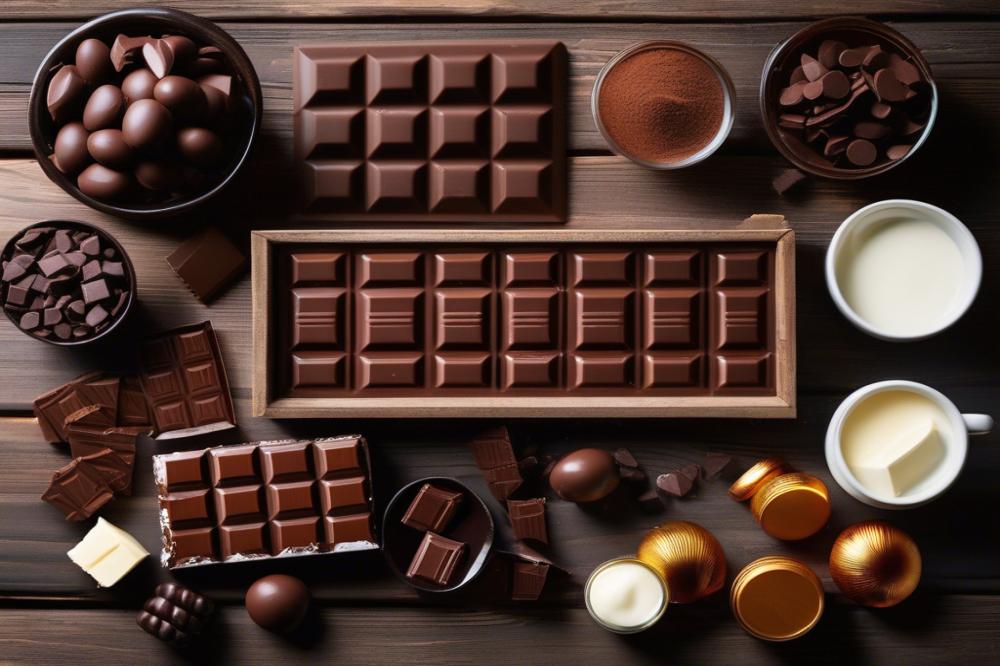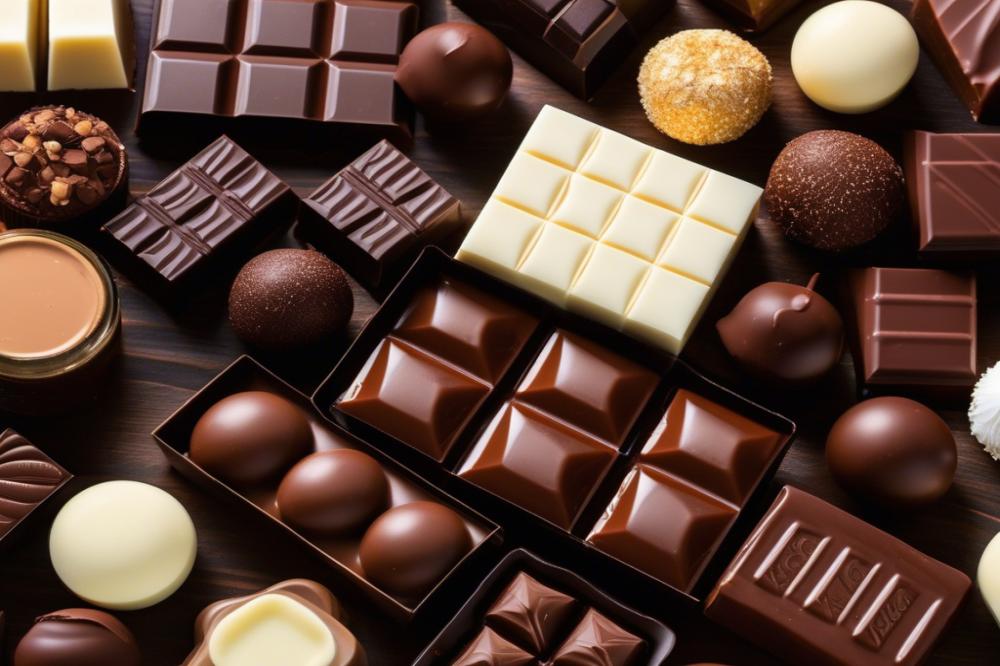Chocolate Pairing: New Frontiers in Culinary Experiences
Exploring flavor profiles in the world of gourmet chocolate opens up a delightful realm of food pairing possibilities. This culinary trend is gaining momentum, enticing chefs and home cooks alike to experiment in innovative ways. There has been a notable rise in consumer interest towards artisanal chocolate, reflecting a broader desire for rich, immersive experiences when it comes to food and drink.
The chocolate industry has experienced significant growth in recent years. New brands and products are emerging, catering to adventurous palates. Tasting events have become popular as enthusiasts gather to share their discoveries. These gatherings allow people to experience the art of pairing, whether it is chocolate with wine or cheese. Such combinations enhance both the chocolate and the complimentary flavors.
As dessert innovations unfold, the importance of pairing continues to rise. Understanding how different ingredients interact allows for a deeper taste exploration. For example, dark chocolate can wonderfully contrast with the crumbly textures of aged cheese, creating a memorable flavor experience. By melding diverse elements together, chefs craft dishes that are not just tasty but also engaging to the senses.
Pairing chocolate with unexpected elements has certainly elevated its enjoyment. As novice cooks and professional chefs alike join in this exploration, the possibilities seem endless. The journey into flavor combinations not only enhances meals but also invites people to appreciate the finer points of Culinary Experiences.
Chocolate Pairing: An Exploration of flavor profiles

Defining chocolate pairing goes beyond simply enjoying a piece of chocolate on its own. It involves combining chocolate with other foods to create delightful tasting experiences. People are becoming increasingly interested in how flavors interact. This has led to a surge in the popularity of gourmet chocolate and innovative food pairing methods.
Understanding Different Flavor Profiles in Chocolate
Cacao beans produce a wide range of flavors. Bitter, sweet, fruity, and nutty notes can all emerge from different types. This variation often stems from factors like the bean’s origin, the fermentation process, and even the roasting method. Artisanal chocolate makers craft bars that highlight these attributes. Exploring flavor profiles can be an exciting journey for the palate.
Impact of Cocoa Origin and Processing on Taste
The origin of cocoa beans significantly influences their taste. Beans sourced from different regions have distinct characteristics. For example, Ecuadorian chocolate may have bright citrus notes, while beans from Madagascar often express berry-like flavors. Processing methods also impact taste. Fermentation and roasting temperatures alter the final profile, leading to various tasting possibilities. These differences spark interest among chocolate enthusiasts and can elevate tasting events to new heights.
Examples of Unique Chocolate Flavor Combinations
Chocolate lends itself well to a variety of interesting pairings. Wine pairing is a popular trend. A rich dark chocolate can enhance the complexity of a bold red wine. Cheese pairing is another option, where creamy varieties can balance the sweetness of milk chocolate. Some chefs explore dessert innovations that include adding spices or herbs to chocolate dishes. Combinations like chili-infused chocolate or lavender chocolate offer exciting twists to traditional flavors.
Taste exploration is essential for understanding the vast world of chocolate. Creative pairings can take dining experiences to another level. Whether it’s with savory cheeses or fragrant wines, the synergies formed can surprise and delight.
Innovations in Gourmet Chocolate and Artisanal Creations

The rise of artisanal chocolate makers has transformed the dessert landscape. Many small producers focus on crafting gourmet chocolate with bold flavors. Creative pairings are becoming commonplace, as these artisans experiment with ingredients that surprise the palate. Pairing chocolate with unexpected elements like herbs or spices creates exciting flavor profiles that captivate chocolate lovers.
Some artisans use local ingredients to craft their treats. This commitment to quality enhances both flavors and freshness. For instance, lavender-infused chocolate or chili-laced bars capture the essence of their surroundings. Tasting events allow enthusiasts to dive deep into these unique creations. Guests can enjoy the delightful combinations that push culinary boundaries.
Exploration of Unique Ingredients in Chocolate Production
Innovative thinkers in the chocolate world are not afraid to take risks. Many are incorporating ingredients like matcha, turmeric, and even exotic fruits into their recipes. These additions not only enhance taste but also provide health benefits, leading to better choices for consumers. Interestingly, the exploration doesn’t stop at taste. Colors from natural dyes create stunning visual presentations.
Innovative Dessert Innovations Incorporating Chocolate
New dessert innovations reflect the creativity of today’s chefs. Chocolate mousse has evolved into cakes with layers of unexpected flavors. Desserts now marry chocolate with savory components too. Food pairing has reached a point where cheese pairing is as common as wine pairing. Chefs and artisans alike are keen to redefine dessert expectations.
Role of Local and Sustainable Sourcing in Enhancing Flavor
Local and sustainable sourcing plays a crucial role in enhancing flavor. Artisanal chocolate makers often establish relationships with farmers, ensuring high-quality cocoa beans. This connection to the source allows for better tracking of flavor profiles. Sustainability practices are also now a priority. Consumers are increasingly looking for products that support environmentally friendly practices.
Culinary trends point to a growing appreciation for these artisanal methods. The tasting experience is not just about chocolate anymore; it is about the story behind it. Featuring locally sourced ingredients makes the end product even more special. This emphasis on sustainability resonates with a growing audience passionate about ethical eating.
The Sheer Delight of Food Pairing

Many food lovers enjoy the thrill of combining flavors. Gourmet chocolate can elevate any dish, bringing out rich, deep notes that surprise the palate. Classic pairings often include a variety of ingredients. In the world of desserts, chocolate can be paired with fruits like strawberries and raspberries, which add a refreshing contrast. Think about how the tartness of these berries enhances the sweetness of dark chocolate. Such food pairing creates a magical balance that keeps people coming back for more.
In-depth look at wine pairing with chocolate
Wine pairing adds another layer of excitement to chocolate experiences. Many enthusiasts discover that certain wines complement specific types of chocolate. For instance, a silky Cabernet Sauvignon works beautifully with robust dark chocolate. The hearty flavor profiles of these wines enhance the chocolate’s rich essence. Meanwhile, lighter chocolates, such as milk or white varieties, often go well with dessert wines. Tasting events featuring these pairings have become quite popular among food adventurers.
Exploring cheese pairing and its rising popularity
Cheese pairing is gaining traction in the culinary world. Artisanal chocolate, when enjoyed with cheese, creates tantalizing sensations. The creaminess of brie can contrast sharply with the bitter notes of dark chocolate. This combination delights the senses in unexpected ways. Diners appreciate the chance to explore these unique pairings at tastings. Cheese makes the experience richer and adds depth to the flavors. Foodies are embracing this trend, discovering how versatile these combinations can be.
Pairing chocolate with spices and fruits for heightened experiences
Spices and fruits offer a world of possibilities for enhancing chocolate. Consider adding cinnamon or chili powder to dark chocolate. These spices introduce warmth and complexity, appealing to adventurous eaters. Fruits, too, play a crucial role in food pairing. Exotic options like passion fruit or mango create a harmonious blend with sweeter chocolates. Many chefs experiment with these elements to craft exciting dessert innovations. It’s all about taste exploration and encouraging diners to try something new.
Tasting Events and Experiential Chocolate Pairings
Emergence of Chocolate Tasting Events and Workshops
Recently, chocolate tasting events have gained popularity across various communities. People now seek unique ways to experience gourmet chocolate. Workshops provide a fun environment for learning. They often showcase artisanal chocolate and highlight diverse flavor profiles. As a result, attendees can explore these offerings in depth. New food pairing ideas also emerge from these gatherings. They encourage creativity and experimentation among participants.
Importance of Guided Tasting Experiences for Flavor Education
Guided tastings play a vital role in flavor education. Without guidance, one might overlook many delightful notes. Experts often lead these sessions, explaining how to savor each bite. Through tasting techniques, individuals discover different flavors within the chocolate. Discussions frequently surround pairing chocolate with wine or cheese for an added twist. This education deepens appreciation for the culinary arts and enhances personal enjoyment.
How Tasting Events Promote Community and Engagement
Tasting events foster a sense of community. People come together with a shared interest in chocolate. Engaging activities spark conversation and friendship among strangers. Local chocolatiers often participate, showcasing their creations. Attendees build connections with both producers and fellow chocolate lovers. This shared experience creates lasting memories and prompts conversations about favorite brands. Group discussions can inspire new dessert innovations and culinary trends.
Innovative Trends in Virtual and Interactive Tasting Experiences
Recent technological advancements have transformed how tasting events occur. Virtual tastings became popular, especially during challenging times. Participants receive chocolate samples in advance, ready to enjoy from home. Interactive elements allow for real-time feedback and questions during the event. Some even offer live demonstrations from chocolatiers, enriching the experience. New formats make it easier for people to join in, breaking geographical barriers. Excitingly, these trends pave the way for ongoing taste exploration and experimentation in various settings.
Culinary Trends and the Future of Chocolate Pairing
Current culinary trends influencing chocolate pairing
Chocolate has quickly become a superstar in the culinary world. Chefs now experiment with gourmet chocolate in unexpected ways. Traditional pairings with wine and cheese are expanding. Flavor profiles are taking on new dimensions. Spicy chili, for example, is often mixed with dark chocolate to create a rich experience. Sweet and savory combinations are no longer just a novelty. The spotlight shines on innovative dessert creations that introduce unique elements.
Analysis of consumer preferences and market demands
Consumers are demanding more from their culinary experiences. They want deeper engagement with food. This shift drives the growth of tasting events that focus on sophisticated pairings. Artisanal chocolate producers respond to these preferences by offering tailored experiences. Flavor diversity is crucial. People are exploring unusual pairings like chocolate with matcha or tropical fruits. Such choices highlight a desire for taste exploration. These preferences reflect a booming interest in diverse flavor combinations.
Predictions for future developments in chocolate pairing
The future looks bright for chocolate enthusiasts. More chefs will likely craft dishes that surprise and delight. Expect to see more events centered around multi-sensory tasting experiences. Chocolate may find its way into savory dishes more frequently. As innovation continues, we might witness new trends integrating plant-based ingredients. Traditional boundaries will blur as culinary artists push the limits. New culinary horizons will be explored, allowing chocolate to take center stage.
Exploration of global influences on chocolate pairing practices
Global cuisine significantly impacts chocolate pairing practices. Countries with rich chocolate histories influence modern trends. For instance, Mexican mole sauce combines chocolate with spices, inspiring chefs around the world. Scandinavian desserts often feature chocolate, nuts, and berries. Chefs incorporate these cultural elements into their menus. Culinary trends often move across borders, leading to exciting new fusions. The harmony of flavors invites continual curiosity. Each region offers new insights into creativity and tradition.
Wrapping Up Culinary Adventures with Chocolate
The world of chocolate pairing has transformed into an exciting landscape for culinary enthusiasts. Diners no longer settle for basic flavors; instead, they seek experiences that excite their taste buds. Combining different ingredients with gourmet chocolate opens doors to endless possibilities. Each pairing tells a story that invites exploration, whether it’s a fruity essence or a nutty aroma.
Innovation continues to thrive in the chocolate industry. Chefs and chocolatiers push boundaries every day, experimenting with diverse flavor profiles. They are not just adding ingredients; they are crafting experiences. As diners become more adventurous, the demand for novel pairings rises. This trend reflects a broader movement in gastronomy toward creativity and exploration.
Looking ahead, the future of culinary experiences through chocolate pairing is bright. There’s potential for unexpected combinations that delight and surprise. Imagine merging chocolate with spices from around the world or infusing it with floral notes, expanding our palate even further. Pairing is not just about taste but an emotional connection that celebrates culture and tradition.
As we embrace these new developments, one thing is clear: chocolate is more than just a sweet treat. It’s a gateway to memorable experiences. The joy of sharing different pairings can foster community and connection. Ultimately, the continuing journey of discovery through chocolate promises to enrich culinary explorations for everyone.



